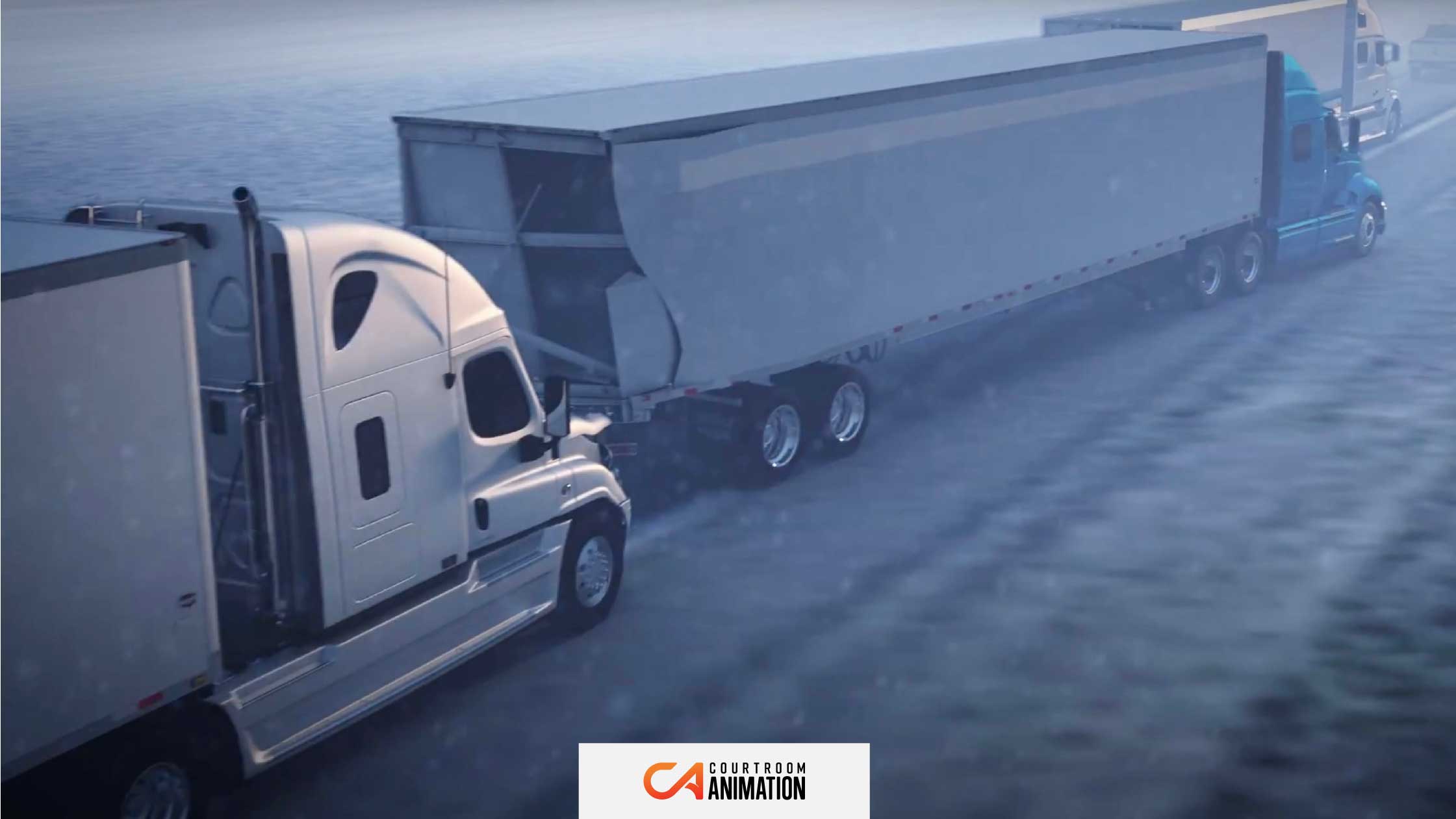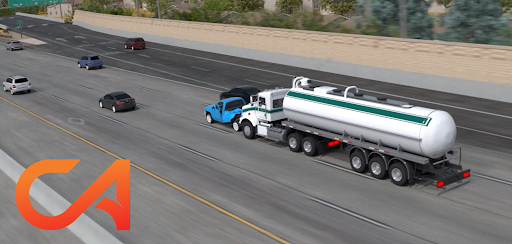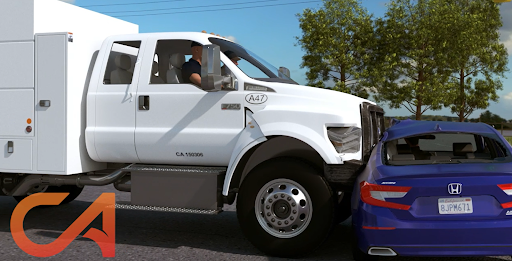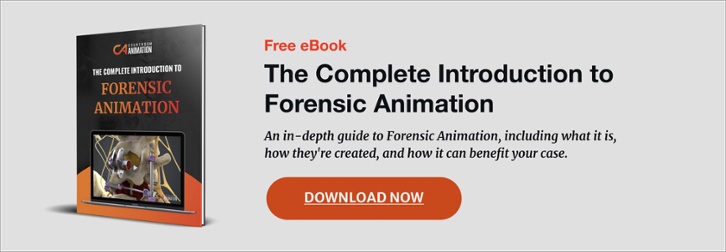
Millions of traffic accidents occur every single day around the world. From those car crashes, between 20 and 50 million people suffer non-fatal injuries, with many incurring a disability as a result. Due to the high number of injuries and fatalities, civil cases are common and often very complex. In these types of litigation, traffic accident animations are a highly effective method of demonstrating liability, and visualizing the sequence of events that caused an accident to occur.
When you’re considering working with an accident reconstructionist to create a traffic accident animation, there are a few valuable insights to know. Here are the six of the most common questions that will help guide you when considering motor vehicle animations.
1. What Types of Traffic Accidents are a Good Fit for Animation?
How do you determine if an animation is a fit for your plaintiff or defendant? Most vehicle accidents can benefit in some way with a traffic accident animation. However, there are four major cases that work well with this type of 3D animation.
Car versus Car
The most common type of car crash animation involves visualizing the collision between two passenger vehicles. Every car crash has a unique set of factors including; speed, visibility, car models, obstructions, weather and more.
An animation can translate the complex traffic-collision reports, and obscure photographs or videos from the scene into an easily digestible and visually stimulating recreation.
Motorcycles versus Car
The National Highway Traffic Safety Administration found that motorcyclists were 4 times more likely to be injured than vehicle drivers. An animation is the perfect way to illuminate how those accidents and related injuries occurred.
In the above video, you can see exactly how the accident played out. There are three unbiased views featured; the oblique view, the right-way wrong-way scenario, and the matched security footage view.
Large Trailer Trucks
Like regular cars, truck crashes are a clear candidate for accident reconstruction services. These types of animations can include:
- Fender benders with smaller cars
- Truck and cyclist collisions
- Lane change crashes
- Trucks and pedestrian accidents
- And more.
Other Vehicle Accidents
- Vehicle versus Pedestrian
- Vehicle versus Cyclist
- Public transportation accidents
Don’t Forget Airplane Accident Reconstructions!
General aviation is becoming much safer — with the rate of accidents down 13% over the last few years. However, due to the complex nature of these crashes, airplane animations, just like traffic accident animations, can provide actionable insights for your case.
The key benefit of an aviation animation is the ability to show the incident from an infinite number of perspectives. Another reason is to explain how an airplane works, as the intricacies of how airplanes operate is not commonly known.
Watch the airplane accident reconstruction animation that helped one attorney land a successful settlement.
Whether you are representing a client that was in a car, motorcycle, truck, or an airplane crash, one unique benefit of a legal animation is that it can show an alternative version of events. These exhibits are known as right-way wrong-way animations.
Depicting the different scenarios and ‘what-ifs’ allows the jury and other decision makers to evaluate the opposing parties’ decisions and what they could have done differently to avoid the collision that occurred.
This is a useful visual to help the jury, or other legal parties, determine liability. But how do animators create such accurate and vivid animations?
2. How are Traffic Accident Animations Created?
Once in agreement about the scope of work, an animation team would review all accident reconstruction reports, car models, and other data. They would then travel to the scene of the incident to take laser scan measurements if necessary. A realistic and accurate 3D animation would then be created based on that raw data.

Caption: Sample Traffic Accident Animation Still
As is the case with most traffic accident cases, an expert witness will be a valuable asset to the animator studio, as they can confirm that the animation is accurate based on their experience.
3. How Effective is the Resulting Crash Analysis?
Once an animation is created, it’s not just a breathtaking visual of the accident. It’s a convincing technique to slow down the video, change perspectives, and address the opposing party’s argument.
An animation team can accurately visualize the environment’s visibility during the night or day time. This allows the attorney to validate or invalidate the various witness perspectives, including those of the opposing party.
For example, an animation of a driver’s point of view during a heavy rainstorm is an effective tool to present to the jury, rather than having someone testify, “I could not see them in the rain.”
4. What are the Cost Factors?
Not all animations are created the same way. The length and complexity of a traffic accident animation can impact the final cost. If there are multiple cars involved, then the animation could take longer to complete and might affect the final cost.
Traffic accident legal graphics are easier to create, and thus faster and on the less expensive side. A studio specialized in accident reconstructions can offer you legal graphic services that will ensure the visual you receive elevates your case and is within your budget.
5. Is a Traffic Accident Animation Admissible?
If you work with an experienced forensic animation studio, admissibility is highly likely.
Legal animations are not new pieces of evidence that are created; they are classified as demonstrative evidence. If the animation is explaining the expert witnesses’ testimony or deposition, recreating the traffic accident, or showing the perspective of your client, then it will likely be admitted. This is because it’s based on data and reports, it’s not creating a new piece of data.
Courtroom Animation has a 99% forensic animation admittance rate and has worked on over 2,000 cases.
6. What Core Point(s) Should it Visualize?
The animation should focus on either one point, or a few major points to clarify your case. If the legal video is long and covers non-critical points in your case, such as a video that’s over half an hour, it might lose its memorable effect.
Unsure if your case needs a legal animation? Download our free forensic animation checklist and learn how to prepare your case.
An experienced animation studio will guarantee a plan to collaborate with you to highlight your core argument for your case.
There are various kinds of core points an animation could cover. For example, a traffic accident animation could explain the mechanism of injury, demonstrate liability for the accident, or highlight how a vehicle malfunctioned.

Caption: Sample Car Crash Animation Still from Courtroom Animation
Why Should Attorneys Rely on Traffic Accident Animation?
A motor vehicle collision animation is one of the best ways for an attorney to keep their audience on the edge of their seat. Witnessing an accident reconstruction where the attorney can pause, rewind, and explain the factors of a car crash is one of the wonders of modern technology.
“They were able to visualize multiple perspectives to show how the truck driver was at fault, not my client. Not only did they show multiple perspectives, but we also showed altered scenarios in which the truck driver diverted from hitting my client. The case went from 100% plaintiff’s fault to almost a 7-figure settlement for the plaintiff.”
– Jon Teller, Wilshire Law Firm
If you have any other questions about traffic accident animation, feel free to contact us or review our FAQ page. Our free eBook, “The Complete Introduction to Forensic Animation,” is also available for busy attorneys who want legal animation information on the go.
